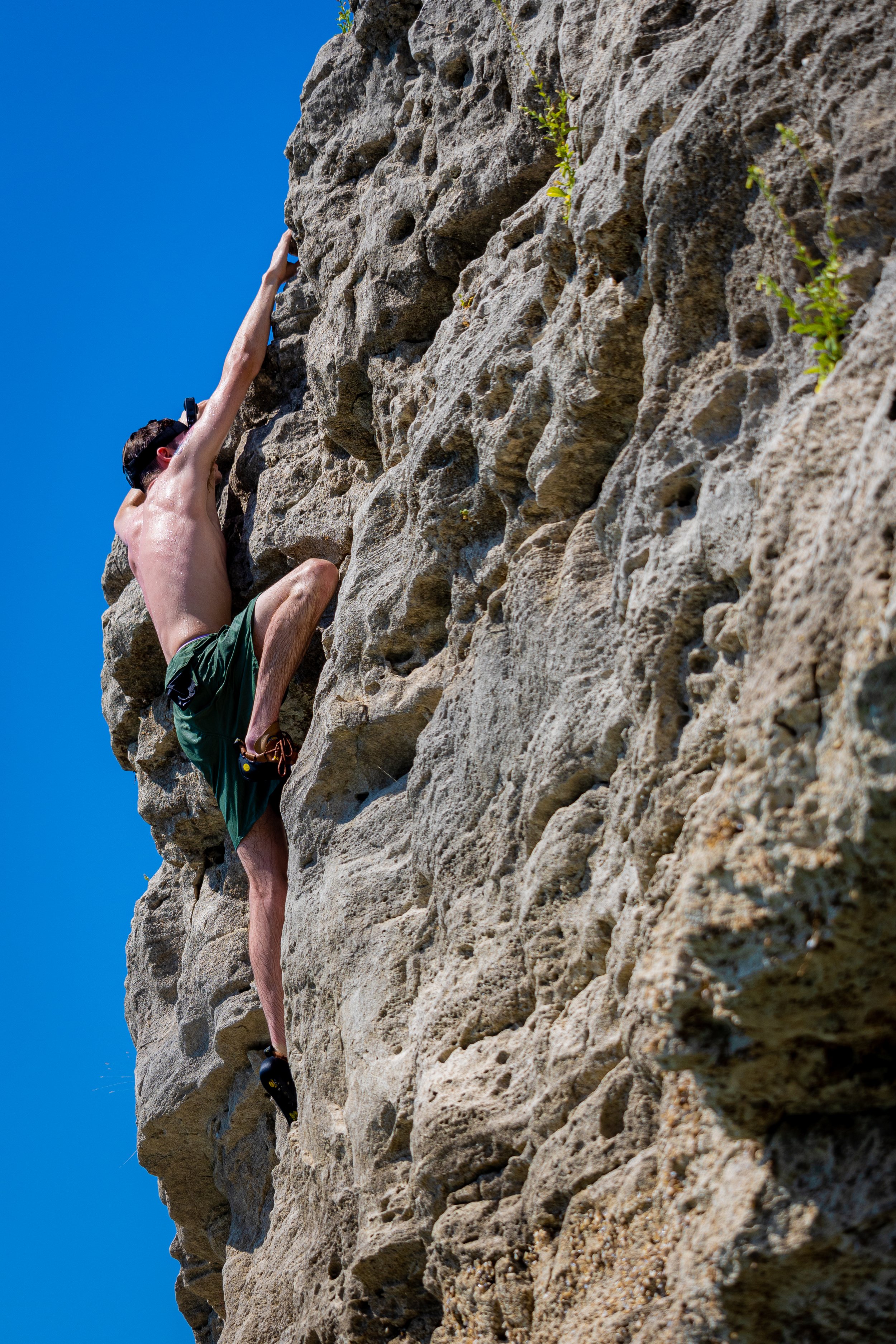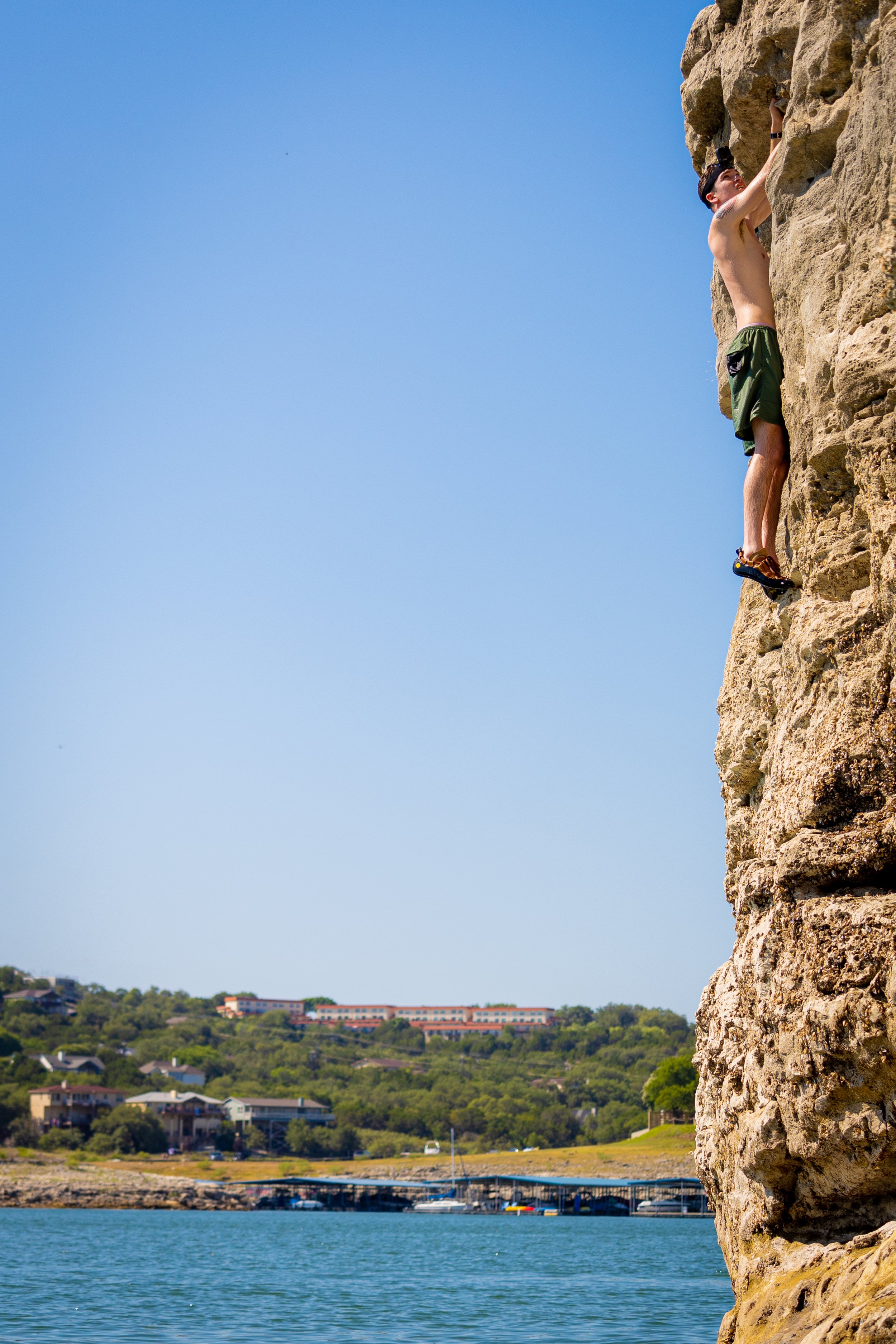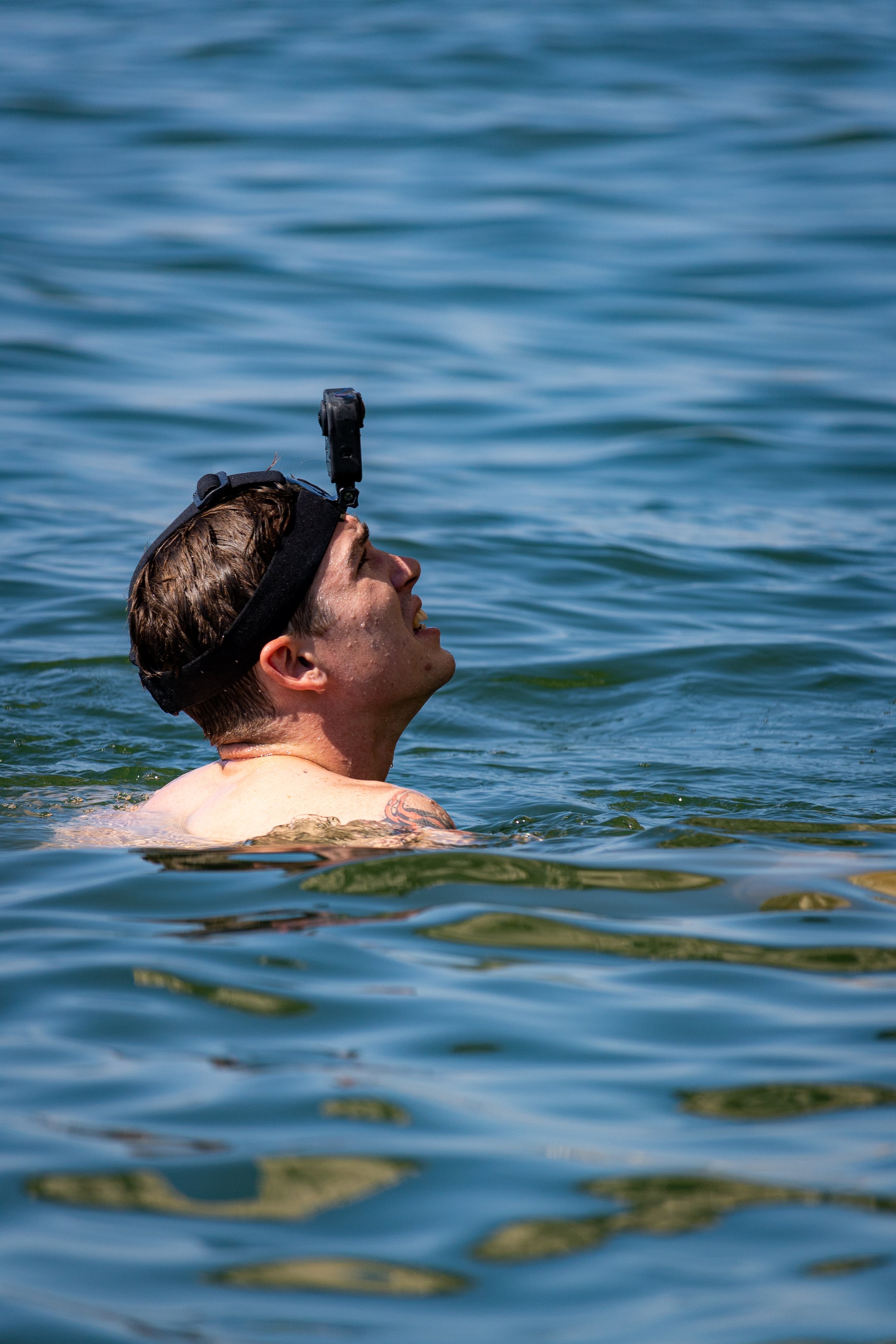Climbing on the Cheap: Deep Water Solo Climbing at Pace Bend Park
Overlooking the cliffs at Pace Bend Park.
DISCLAIMER: Attempt any and all actions displayed below at your own risk. Do the proper due-diligence and research before trying climbing over water. Also, PLEASE take a buddy.
From May until August, the University of Texas at Austin closes its gyms to all students not taking summer classes. For a paltry $26 a month, students taking a break from their studies can continue working out, but that kind of money is hard to scrape together when keeping a tight budget. Here at Drift, a few of us found ourselves in that very situation.
Out of all the outdoor activities, rock climbing is one of the most accessible and least expensive methods of burning calories. However, without a gym membership, a bouldering pad, or a few friends who have enough gear, climbing becomes an expensive proposition. If another form of fall protection was available, however, perhaps it might be possible to forgo any extra costs.
Kayaker paddles parallel to the cliffs of Pace Bend Park. July 2, 2022.
The answer comes in the form of our most important natural resource: water, and Lake Travis has a LOT of it. Travis also has sheer cliff faces, some of which are easily accessible from various coves in North West Austin’s Pace Bend Park. Though the lake might be down more than 50 feet at the time of writing, there is still plenty of depth to partake in a specialty form of rock climbing called Deep Water Solo, or DWS for short.
A blue heron hunts in the shade. July 2, 2022.
On July 2nd, at 7:15am, Drift Magazine’s Summer Crew left like a herd of turtles, with Google Maps barking directions to Pace Bend Park. What we experienced were sharp, craggy, limestone holds, adrenaline, and a refreshing 25 foot plunge. This is what we learned.
Drift Magazine Editor-in-Chief Rushton Skinner tests a hold. July 2, 2022.
What You Need
While there is really nothing absolutely necessary for DWS climbing, there are definitely some items that can make or break the morning.
Drift Editor Rose Marin supervises all tom-foolery and records. July 2, 2022.
1) Flotation Device
This is numero uno. Having a flotation device is a total must have (I know I said nothing, but this one is for safety). Imagine having to tread water in between climbs. The bigger the better.
Photo by Rushton Skinner
2) Climbing Shoes
There are DWS specific shoes, but they aren’t necessary. A beater pair is more than sufficient. Or Chaco’s. Who cares?
Photo by Rushton Skinner
3) Chalk
The idea of DWS climbing is climbing out of the water, only to fall back in. To keep your chalk bag fairly dry, you need a buddy and a big enough flotation device; two things that make this sport even mostly safe. For that reason, always bring chalk.
4) Water
Drinking the water out of Lake Travis is not advised. Bring your own supply of drinking water.
5) Sunscreen
Not everybody gets sunburned, but everybody can get skin cancer. Wear your sunscreen, people.
Skinner contemplating the nature of his situation. July 2, 2022.
What to Look Out For
Like all rock climbing, there’s an element of danger to DWS. Getting lazy can get you hurt, that’s why it’s important to look out for a couple of things.
Skinner, thinking of the ledge beneath him, makes a face. July 2, 2022.
1) Find a spot with an immediate drop-off.
This may seem like a no-brainer, but one of the staff (me) attempted a route that required a roughly 20’ climb before one could fall safely. Do not do this, it was scary.
Skinner treads water, looking for a better way up. July 2, 2022.
2) Once a spot has been found, perform a “depth check.”
Another seemingly no-brainer, if you don’t follow this one, you might not have a brain to regret it. Every three feet or so, one of the crew would dive down and make sure there was AT LEAST eight feet of depth. Luckily, in many spots, the drop-off was so severe that the bottom was much deeper than that.
Skinner attempts to pull himself out of the water sans chalk. July 2, 2022.
3) Watch out for zebra mussels!
These invasive knives of nature have infiltrated much of the Texas waterways. Besides the (required) act of rinsing off anything that has touched the water, simply watching your hands and feet is a must. If you aren’t too careful (or just don’t care), it is easy to end your day with 100 more cuts on your hands than when you started.
Skinner succeeds at pulling himself up into the beginning of an improvised problem. July 2, 2022.
4) You will get very tired, very quickly
Even if you are floating on a paddleboard, you’re still swimming to and from, kicking yourself up and onto the first hold or a ledge. It’s always better to go in and rest than to push yourself further than needed. We found that the lengthy paddle back to the car took the last remaining energy out of the group.
Okay, we understand that its basically an hour drive from campus and with gas prices the way they are right now, an expedition to Pace Bend Park isn’t exactly a walk in the park.
But, if you have a few friends who don’t mind splitting the gas bill, it’s still cheaper (and a lot more fun) than going to the gym.
You can be sure you’ll see us out there.
Photos by Cheney Stephenson











